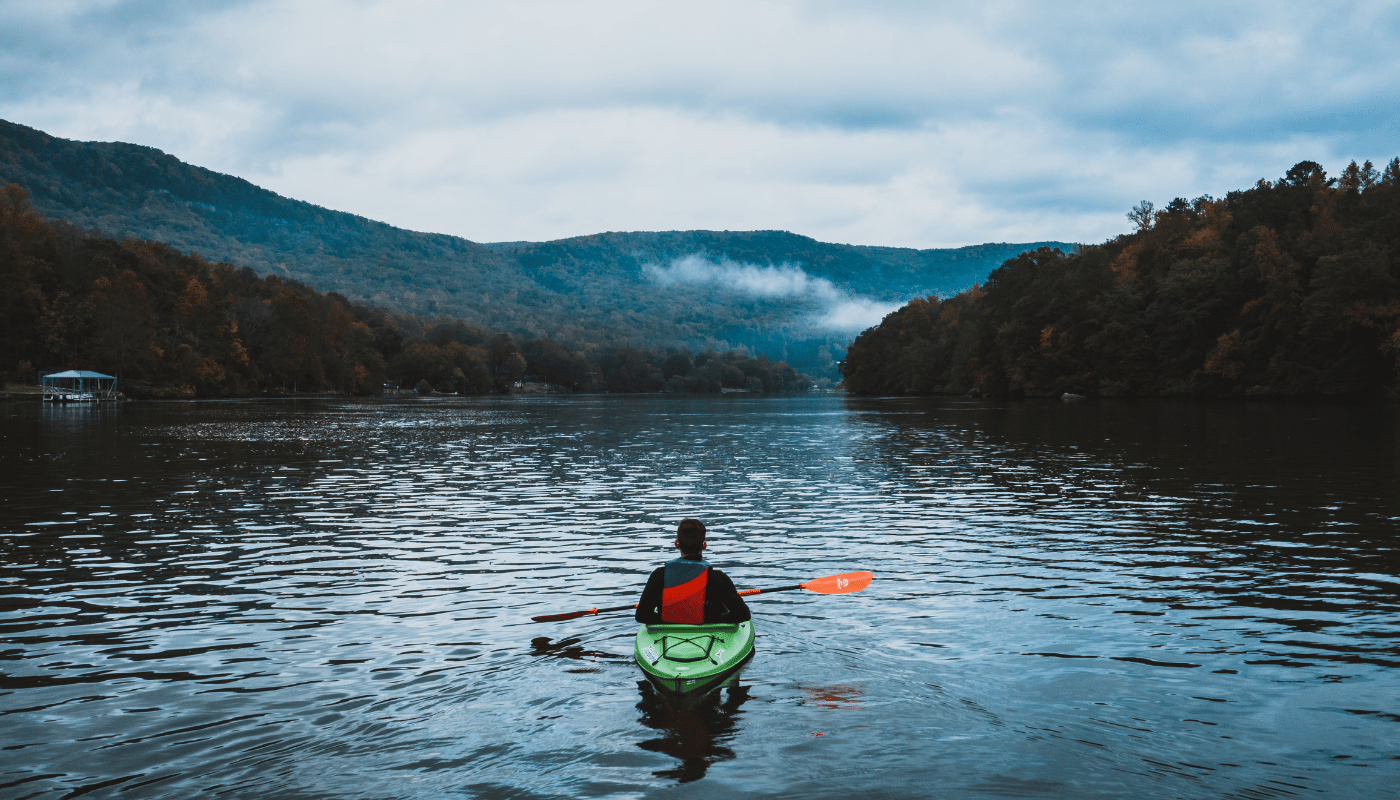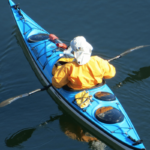Kayaking is an exciting outdoor activity that combines adventure, fitness, and relaxation. Whether you’re gliding over serene lakes, navigating through rushing rivers, or exploring coastal waters, kayaking offers a unique way to engage with nature and get a good workout. It has become increasingly popular in recent years, attracting people from all walks of life who are looking for an activity that blends excitement with tranquility.
For many, the question of whether kayaking is fun often arises when they first try the sport. The appeal of kayaking lies in its versatility. Kayaks come in many forms, including recreational, touring, and whitewater kayaks, each offering a distinct experience. Whether you’re looking for a peaceful afternoon on a calm lake or seeking an adrenaline rush in fast-moving rapids, kayaking has something to offer everyone.
The answer, Is kayaking fun, lies in what makes the activity so universally appealing: it’s a combination of physical exertion, the thrill of exploring new environments, and the mental relaxation it offers. People of all ages and skill levels can enjoy kayaking, making it a family-friendly and accessible activity. The sheer simplicity of paddling through the water provides a refreshing escape from everyday stresses, while the physical demands of paddling can be a rewarding challenge for those looking to stay active.
Benefits of Kayaking
Kayaking offers a wide range of benefits that go beyond just being a fun activity. First and foremost, kayaking is an excellent full-body workout. As you paddle, your core, arms, and legs are all engaged, providing both strength and endurance training. The repetitive motion of paddling also helps improve cardiovascular health, promoting a healthy heart and boosting overall stamina. Whether you’re kayaking on calm lakes or navigating more challenging rivers, the physical exertion involved ensures that you’re getting an effective workout.
But kayaking isn’t just good for your body; it’s also great for your mind. Being on the water, surrounded by nature, can significantly reduce stress and promote relaxation. The rhythmic motion of paddling and the soothing sounds of water help calm the mind and increase mindfulness. Studies have shown that outdoor activities like kayaking can help alleviate symptoms of anxiety and depression, offering mental clarity and emotional well-being.
Furthermore, kayaking provides an excellent opportunity to bond with family or friends. It can be a social activity where people come together to explore new locations, share experiences, and create lasting memories. Even if you choose to kayak alone, it offers a sense of solitude and personal reflection. So, whether you’re after fitness, relaxation, or social connection, kayaking has something to offer everyone.
Types of Kayaking and Their Fun Factor
One of the most exciting aspects of kayaking is the variety of ways you can experience it. There are several types of kayaking, each offering its own unique adventure and fun factor. Whether you are a thrill-seeker or someone looking for a calm and peaceful experience, there’s a type of kayaking for you.
The most popular types of kayaking include:
- Recreational Kayaking: Ideal for beginners or those looking for a leisurely experience, this type of kayaking is typically done on calm lakes, rivers, or bays. It’s the perfect choice for people who want to relax on the water without the challenge of navigating through rough conditions.
- Whitewater Kayaking: This is the type of kayaking that’s all about adventure and adrenaline. Whitewater kayakers navigate through rapids, making it an exhilarating experience for those who love a challenge and the thrill of fast-moving water.
- Sea Kayaking: This type involves paddling along coastlines or open waters, often over longer distances. Sea kayaking allows you to explore beautiful coastal areas and often includes multi-day trips. It combines the beauty of nature with the joy of adventure.
- Touring Kayaking: Similar to sea kayaking, touring is done over longer distances, often involving more challenging waters. It’s perfect for those looking for a deeper connection with nature and the satisfaction of long-distance paddling.
After reading about the types of kayaking, it becomes clear that no matter your preference, there is a style of kayaking that promises enjoyment and adventure. Whether you’re drawn to the excitement of rushing rapids or the tranquility of serene lakes, kayaking offers diverse experiences that cater to all levels of skill and adventure.
What Makes Kayaking Fun?
Kayaking offers a unique blend of adventure, relaxation, and challenge, which makes it an enjoyable activity for people of all ages. So, what exactly makes kayaking fun? It’s a combination of several factors that cater to different interests and personalities. One of the most obvious reasons kayaking is so much fun is the thrill of adventure. Whether you’re paddling on a calm lake or navigating through whitewater rapids, kayaking always offers an element of excitement. For adrenaline junkies, the challenge of tackling fast-moving waters or exploring new, remote locations adds an exciting aspect to the sport.
But kayaking also provides a sense of freedom and peace that makes it enjoyable for those who are looking for a more relaxed experience. Many people find that kayaking on calm, quiet waters allows them to clear their mind and connect with nature. The rhythm of the paddle in the water, the fresh air, and the stunning surroundings provide a mental escape from the stresses of daily life. The peacefulness of kayaking on lakes, rivers, or along coastal shores can be incredibly meditative, offering a mental reset and stress relief.
Another factor that contributes to the fun of kayaking is the sense of accomplishment it provides. Whether you’re learning the basics or pushing your limits with advanced techniques, kayaking gives a feeling of achievement. Overcoming the challenges of paddling, mastering techniques, and even completing a long journey on the water can boost your confidence and self-esteem. For those who enjoy learning new skills, kayaking is a continuous journey of improvement, which makes it fun to practice and perfect over time.
The Social Aspect of Kayaking
One of the most appealing aspects of kayaking is its social nature. While some people enjoy kayaking as a solo activity, many others find joy in sharing the experience with friends, family, or even strangers. Whether you’re paddling alongside a partner, going on a guided tour, or joining a kayaking group, there’s a strong sense of camaraderie and shared adventure in the kayaking community.
Kayaking is often done in pairs or groups, and there’s something inherently social about being on the water with others. For families, kayaking offers an opportunity to spend quality time together in a fun and engaging way. Families with young children can enjoy tandem kayaks or join family-friendly kayaking tours. For friends, kayaking provides a great bonding experience as you work together to navigate the waters or simply relax and enjoy the surroundings.
In addition to the social opportunities with friends and family, kayaking also offers a chance to meet new people. Kayak clubs and groups are common across many regions, and joining one is a great way to connect with like-minded individuals who share a passion for outdoor adventure. These groups often organize group kayaking trips, races, and social events, allowing participants to form lasting friendships while enjoying the sport together.
The social benefits of kayaking extend beyond just the fun of paddling together. Many kayakers form strong connections due to the shared experiences of facing challenges together on the water. Whether it’s helping someone flip their kayak after a spill, coordinating to navigate rapids, or simply sharing a lunch on the shore, these experiences build a sense of teamwork and trust among participants. As a result, kayaking can be a powerful way to build and strengthen relationships with others.
Kayaking for Different Skill Levels
One of the most compelling reasons why kayaking is such a popular activity is its accessibility to all skill levels. Whether you’re a first-time paddler or a seasoned kayaking enthusiast, there are options for everyone, and each level of experience brings its own unique enjoyment.
For beginners, kayaking offers a perfect opportunity to enjoy the outdoors while learning a new skill and if you are just starting out and want to know at what age you can start kayaking, this may be helpful. Flat-water kayaking on calm lakes or slow rivers is often recommended for those just starting. These waters provide a peaceful, controlled environment that allows beginners to master basic paddling techniques at their own pace. Many first-time kayakers are curious if “is kayaking fun” even for beginners. The answer is a resounding yes! With the right equipment, a gentle pace, and minimal stress, beginners can experience the thrill of gliding through the water while building their skills and confidence.
Once you’re comfortable with basic paddling techniques, you may want to explore more challenging environments, such as faster-moving rivers or coastal areas. This brings an element of adventure and excitement to your kayaking experience. Intermediate kayakers often enjoy sea kayaking, where they face changing tides and potential waves, or river kayaking, which involves navigating through moving currents and obstacles. The increased challenge elevates the fun factor, testing both your skill and your endurance.
At the advanced level, kayakers can tackle some of the most exhilarating experiences, like whitewater kayaking, which involves navigating through intense rapids. The adrenaline rush of paddling through choppy water or even performing tricks in the surf makes advanced kayaking a true adventure. For those with years of experience, there is always a new challenge, whether it’s exploring remote regions, racing, or perfecting advanced paddling techniques.
No matter your skill level, kayaking offers something for everyone. It’s an activity that is constantly evolving, allowing beginners to grow into experienced kayakers, and providing intermediate or advanced paddlers with new challenges. The key to the enjoyment is finding the right environment that matches your skill level, ensuring that kayaking remains a fun and exciting activity.
Comparing Kayaking Experiences by Skill Level
| Skill Level | Ideal Kayaking Experience | Fun Factor | Challenges |
| Beginner | Flat-water kayaking, calm lakes, and rivers | High (relaxed enjoyment) | Learning basic paddling techniques |
| Intermediate | Sea kayaking, river kayaking | Moderate to High | Managing waves, currents, and obstacles |
| Advanced | Whitewater kayaking, extreme conditions | Very High (adrenaline) | Navigating fast rapids, performing tricks |
As illustrated in the table, the “fun” factor of kayaking increases as you progress through different skill levels. For beginners, it’s about enjoying the serenity and learning the basics. As you gain experience, the excitement builds, and advanced kayakers find their thrill in overcoming challenges like whitewater rapids and rough seas. Regardless of your skill level, the question “Is kayaking fun” remains constant — the answer is always yes, but the level of fun changes based on the environment and challenge.
After each level, kayakers often experience a sense of accomplishment as they overcome new obstacles and refine their techniques. The progression keeps the activity fresh, exciting, and ever-rewarding.
Conclusion
After exploring the various benefits and exciting aspects of kayaking, has likely been answered from multiple perspectives. The truth is, kayaking is a highly enjoyable activity that appeals to a wide range of people, no matter their age, skill level, or interests. Whether you’re looking for a peaceful escape, an adrenaline rush, or a way to stay fit, kayaking offers something unique and exciting for everyone.
For beginners, the fun of kayaking often comes from the opportunity to enjoy nature in a completely new way. Paddling along a quiet lake or gentle river can be incredibly relaxing and soothing. For those just starting out, the ease of getting into a kayak and the gradual learning process make it an accessible sport. And while beginners may wonder if for them, the simplicity and serenity of the activity provide a deeply enjoyable experience, making it perfect for those new to water sports.
As you advance in skill, the fun of kayaking shifts to new challenges and more thrilling experiences. For intermediate kayakers, the excitement of tackling slightly faster-moving water, exploring new places, or even learning new techniques can add layers of enjoyment. The sport constantly evolves with the skill level of the paddler, ensuring that it remains both fun and fulfilling as you progress.
For those who take kayaking to the expert level, the sport offers intense excitement. Whitewater kayaking, sea kayaking in rough conditions, or long-distance touring all provide high-adrenaline challenges that keep the fun factor high. It’s not just about mastering the physical aspects of the sport; kayaking can also be about pushing mental boundaries, testing your limits, and overcoming obstacles.





